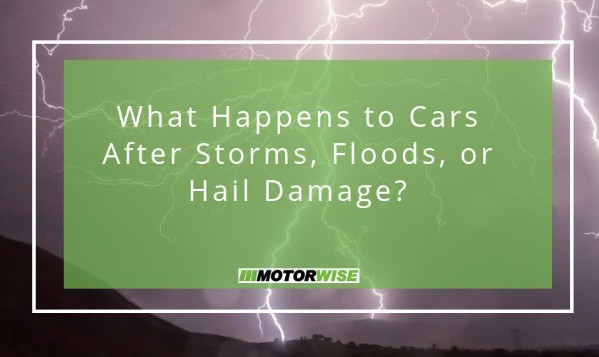
- Published 03/11/2025
What Happens to Cars After Storms, Floods, or Hail Damage?
Introduction
Bad weather doesn’t just ruin plans. It can destroy cars too. When a flood sweeps through or hailstones hammer down, thousands of vehicles are damaged in a matter of hours. Some can be repaired. Many can’t. But where do they all go? What really happens to cars once the storm clears and the insurance claim begins?
Let’s follow that journey.
From driveway to inspection
After the damage is reported, an insurance engineer checks the car and calculates whether it’s worth fixing. If the repairs cost more than about two-thirds of its value, it’s declared a total loss. That decision determines what happens next.
Cars beyond repair are classed by category:
Category A means vehicles are completely destroyed.
Category B can’t go back on the road but has parts worth saving.
Category S or N are repairable, depending on whether the structure is damaged.
Each one follows its own path from that point on.
The hidden threat of flood damage
Flooded cars are unpredictable. Water gets everywhere under carpets, into wiring, behind panels. Even when they dry out, problems linger. Sensors fail, warning lights flicker, corrosion starts quietly. That’s why insurers rarely risk putting them back on the road.
Instead, most end up sold to authorised treatment facilities. The fluids are drained safely. Reusable parts are removed. What’s left is recycled into raw material for manufacturing. It’s not the end of the story, just a different one.
Hail damage: repairable but costly
Hail dents panels, roofs, and bonnets by the dozen. The good news is that paintless dent repair can fix a lot of it. The bad news is cost. Each small dent takes time, and large clusters make repairs uneconomical.
In big storms, insurers often sell these cars in bulk to specialist repairers. They fix them more efficiently and sometimes send them back into circulation. If the car’s structure and paint survive, it can live again legally, safely, and usually looking as good as new.
Salvage and second chances
Salvage companies play a key role after every major weather event. They buy damaged vehicles from insurers, inspect them, and decide whether to repair, reuse, or dismantle. Cars with light damage might be repaired and sold with a category label. Others become a valuable source of engines, gearboxes, and interior parts for repairs elsewhere.
Even a heavily flooded or dented car has worth. Metal, plastics, and glass are all recycled, reducing waste and saving energy compared with building from scratch.
The rise of electric challenges
As electric and hybrid cars become common, storm damage gets more complex. Water and high-voltage batteries don’t mix, so those vehicles need specialist assessment. Damaged batteries are removed carefully and stored safely for recycling or refurbishment. It’s slow, precise work but essential to keep both people and the environment safe.
The environmental upside
It might seem wasteful to scrap so many cars, but the recycling process is efficient. Around 95 percent of a modern vehicle can be recovered and reused. From metals to rubber, almost everything finds a second life. That reduces pollution, lowers manufacturing demand, and prevents hazardous fluids from leaking into soil or waterways.
So while storms can create chaos, what follows is a system built on order and safety.
What car owners can do?
If your car suffers flood or hail damage, resist the urge to start it. Turning the key can make things worse. Take photos for the insurer, remove personal belongings, and let the experts handle it. When it’s written off, companies like Motorwise arrange quick collection, proper documentation, and responsible recycling.
Even in bad situations, that transparency helps owners move on quickly and safely.
In Summary
Storms and floods are unpredictable, but what happens next doesn’t have to be. Behind every damaged car is a network of engineers, recyclers, and technicians turning problems into resources. Some vehicles are reborn, others are responsibly dismantled, but nothing goes to waste.
When the weather clears, those ruined cars don’t just disappear they begin again in a different form. And that, in a quiet way, is something to feel good about.

